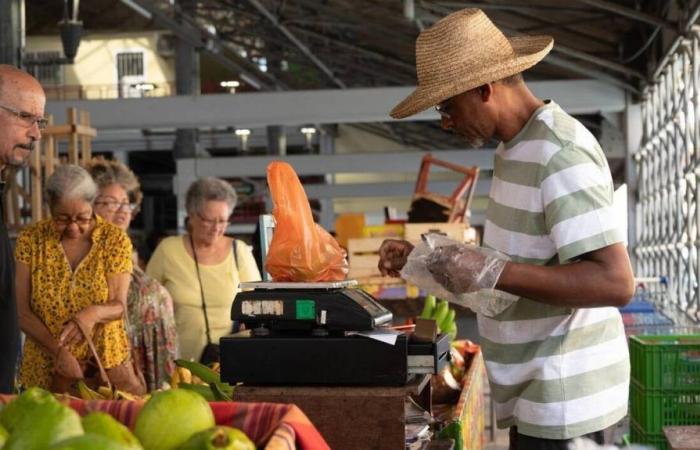
From food to health, the cost of living for Martinicans is much higher than that of mainland France. Since September, the island of Martinique has been in the grip of a mobilization against the high cost of living, initiated by a movement called the Rally for the Protection of Afro-Caribbean Peoples and Resources (RPPRAC), which degenerated into riots. The night from Friday to Saturday was “rather calm” according to the Minister for Overseas Territories, after tense violence during the day on Friday, but an agreement between the government and the social partners has still not been found.
40% more expensive for food products
According to the latest statistics from INSEE, in 2022, overall consumer prices will be 14% higher in Martinique than in France. A figure which is up slightly compared to 12% in 2015 and 10% in 2010. This is an average difference which takes into account the differences in consumption habits of the inhabitants of the two territories.
More precisely, for a metropolitan household, if it maintains its consumption habits in Martinique, it increases its consumption budget by 17%. On the other hand, a Martinican household pays 11% more for its consumption basket than if it consumed it in mainland France, again according to INSEE figures.
This Martinique gap with France remains lower than that of Guadeloupe (+ 16%), similar to that of Guyana and higher than that of Reunion and Mayotte.
It is the price of food that contributes the most to the price gap between Martinique and mainland France. On average, food products and non-alcoholic drinks cost 40% more in Martinique than in mainland France. This gap was 38% in 2015. Dairy products, meat and fruit mainly contribute to this development, according to INSEE.
Among agri-food products, “meat represents 17% of the consumption expenditure of Martinique households and only 17% of consumption comes from local production in 2019. This family of products is among the most heavily taxed on import into Martinique”analyzes the National Institute of Statistics and Economic Studies. Furthermore, the import taxation system itself is different from mainland France.
If we return to the comparison by consumption habits: for a basket of food products in mainland France, the latter will cost 50% more in Martinique. Conversely, for a Martinican basket, food prices will be 31% more expensive than those in mainland France.
Alcoholic beverages and tobacco also show significant price differences with mainland France (+ 23%), but these products only represent 1% of the consumption budget of Martinican households.
As shown in the graph above, prices are more expensive in Martinique except transport, for all other consumption components.
On the health side, the share of expenses in the budget of Martinican households amounts to 12%. The price gap for health expenditure is +13%, “mainly due to higher prices for goods such as medicines, devices and therapeutic materials, compared to health services”according to INSEE. These are gross prices before reimbursement by social security and complementary health insurance. These product families are also among the most imported into Martinique in 2021 (6% of imports).
A different consumption structure
For a Martinican household, the structure of its expenditure also displays differences with that of France. With a share of 18%, transport takes the largest part of the budget of a Martinique household, which is higher than for a metropolitan household. The situation is the opposite for leisure activities, restaurants and hotels, alcoholic beverages and tobacco.
A poverty rate twice as high
In Martinique, 44,300 Martinique households, which represent 27% of the total population, live below the poverty line, almost twice the metropolitan rate (14.9%), according to the latest figures from INSEE in 2021 published in 2023.
If poverty is more frequent in Martinique than in France, it is also more intense. The median standard of living of households experiencing poverty in the region is lower than that of all poor metropolitan households: in Martinique it stands at €10,400 per year per consumption unit, compared to €10,740 in metropolis. In mainland France, only in Île-de-France do households in poverty represent a lower median standard of living (10,340 euros).
Social benefits represent the first component of income for poor Martinican households (47%), far ahead of earned income (21%).





